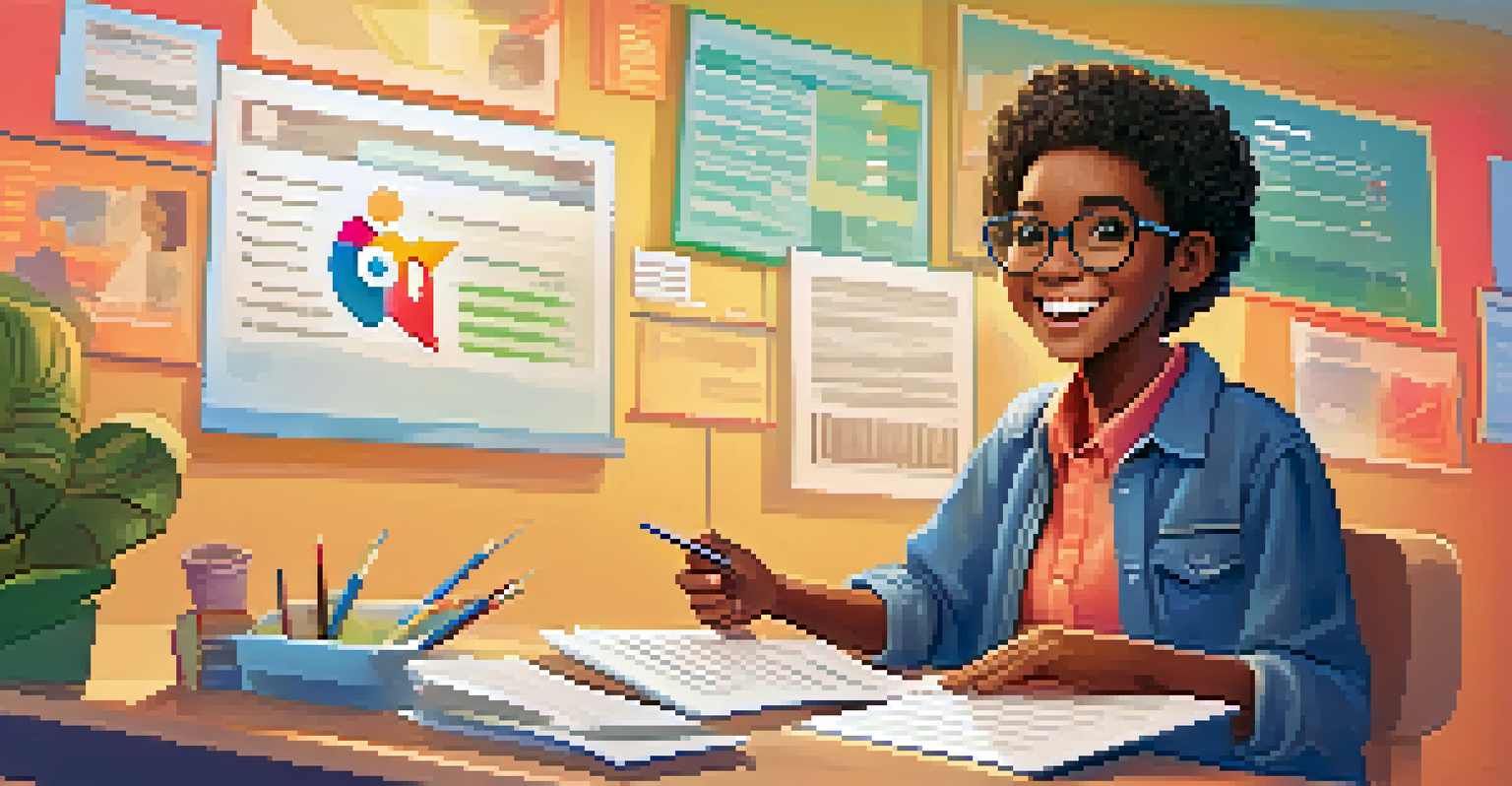How Gamification Boosts Student Engagement in Modern Classrooms

Understanding Gamification in Education
Gamification in education refers to incorporating game-like elements into learning experiences. This can include points, badges, leaderboards, and challenges that make learning more interactive and enjoyable. By infusing these elements, educators aim to motivate students and create a more dynamic classroom environment.
Games are the most elevated form of investigation.
Imagine a classroom where students earn points for completing assignments, similar to leveling up in a video game. This approach not only makes learning fun but also encourages healthy competition among peers. As students engage with the material, they are more likely to participate actively and retain information.
Ultimately, understanding gamification's role in education helps educators design strategies that resonate with today's tech-savvy learners. It shifts the focus from traditional rote learning to an interactive experience that fosters collaboration and creativity.
The Psychology Behind Gamification
At its core, gamification taps into fundamental psychological principles that drive human behavior. Concepts such as motivation, feedback, and reward systems play a crucial role in how students engage with their studies. By understanding these psychological triggers, educators can create experiences that keep students invested in their learning.

For example, the instant gratification of earning points or receiving feedback can significantly enhance a student's motivation to complete tasks. This aligns with the idea of positive reinforcement, where students are rewarded for their efforts, encouraging them to continue progressing. The more engaged they feel, the more likely they are to succeed.
By leveraging these psychological principles, educators can foster a growth mindset in students, helping them see challenges as opportunities for improvement. This shift not only promotes resilience but also encourages a love for learning that extends beyond the classroom.
Enhancing Collaboration Through Gamification
One of the most significant benefits of gamification is its ability to promote collaboration among students. Team-based games and challenges encourage students to work together towards a common goal, fostering a sense of community in the classroom. This social interaction is crucial for developing communication and teamwork skills.
The best way to predict the future is to create it.
For instance, consider a classroom where students are divided into teams to solve a problem or complete a project. As they strategize and share ideas, they learn to appreciate diverse perspectives and approaches. This collaborative environment not only enhances engagement but also prepares students for real-world scenarios where teamwork is essential.
Furthermore, the collaborative aspect of gamification can reduce feelings of isolation, especially for students who may struggle academically. By working together, students can support one another, creating a more inclusive learning atmosphere that benefits everyone.
Real-Time Feedback and Its Importance
Gamification provides students with real-time feedback, a vital component of effective learning. Unlike traditional assessments that may take time to grade, gamified elements allow students to see their progress immediately. This instant feedback loop helps them understand their strengths and areas for improvement.
Imagine a scenario where a student completes a quiz and instantly receives a score along with tips for areas to focus on. This immediate response creates an engaging learning cycle where students can adjust their strategies and improve their understanding of the material. It turns learning into an active process rather than a passive one.
Moreover, real-time feedback helps build a sense of ownership over their learning journey. Students become more aware of their progress, motivating them to take charge of their education and strive for better results.
Encouraging a Growth Mindset
Gamification is a powerful tool for fostering a growth mindset in students. This mindset encourages learners to view challenges as opportunities to grow rather than obstacles to overcome. By integrating game elements, educators can help students develop resilience and a positive attitude towards learning.
For example, a classroom that rewards effort and improvement rather than just final scores can shift students’ perspectives. When students see that their hard work is acknowledged through points or badges, they are more likely to embrace challenges and persevere through difficulties. This promotes a culture of continuous learning and improvement.
Additionally, gamification encourages students to set personal goals and track their progress. This self-reflection process cultivates a deeper understanding of their learning journey, making them more resilient and adaptable in the face of challenges.
Creating a Fun Learning Environment
At its best, gamification transforms the classroom into a vibrant and enjoyable learning environment. By incorporating game elements, educators can make learning feel less like a chore and more like an adventure. This shift can be particularly beneficial for students who may struggle with traditional teaching methods.
Consider a science class that uses a game to explore ecosystems. Students can earn rewards for completing experiments or answering questions correctly, all while having fun. This playful approach not only engages students but also enhances their understanding of complex concepts through interactive experiences.
Ultimately, a fun learning environment promotes enthusiasm for education. When students look forward to coming to class, they are more likely to engage actively, participate in discussions, and take ownership of their learning.
Measuring Success: Analytics in Gamification
One of the most exciting aspects of gamification is its ability to provide measurable results through analytics. Educators can track student progress and engagement levels in real-time, allowing them to adjust their teaching strategies accordingly. This data-driven approach ensures that all students receive the support they need to succeed.
For example, analytics can reveal which gamified activities are most effective in engaging students. If a particular game leads to higher participation and better grades, educators can incorporate similar elements into future lessons. This continuous improvement cycle enhances the overall learning experience.

Moreover, analytics can help identify students who may need additional support. By monitoring their performance, educators can intervene early, ensuring that no student falls behind. This proactive approach contributes to a more equitable learning environment.